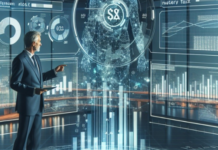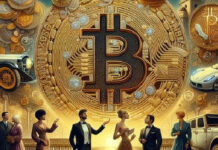Sarson Funds, Inc.
A New Dimension Of Art
Understanding how NFTs have made an impact in the digital asset community is important for advisors to know so that they can have meaningful conversations with their clients. Part 1 discussed NFT collectibles and how they derive their value and popularity. Digital art, including what Richman refers to as generative art, is another area of NFT development that advisors should understand.
While crypto art has been around in various forms since 2015, the medium made a huge splash in March as “Everydays: The First 5,000 Days” by Beeple sold for $60.25 million at auction, which cost the buyer $69 million when Christie’s buyer’s premium is included. That made “Everydays” as the most valuable piece of digital art to be sold at auction thus far. Today, NFT-oriented art commonly sells in the millions of dollars.
“Blockchain architecture presents a better way for artists to distribute their work and recognize royalties from their work. For collectors the blockchain provides better access,” said Richman. “You no longer have to sign up for Christie’s auctions. The new architecture provides a new way for artists to compete and become recognized and for new collectors to become involved because there’s a marketplace where anyone can actively buy and sell this stuff in real time.”
For artists, it presents an opportunity to participate in secondary sales or receive residuals for the display of their work, while collectors have the assurance of a clear certified chain of ownership for the art. Royalties can grow with the value of the artwork on the open market, said Richman.
But generative art adds an entirely new dimension to digital artwork.
“This is a new era of art,” said Richman. “Generative art is assigning colors, textures and shapes typically based on randomness that is achieved from the transaction hash when that NFT was initially minted. It creates a unique moment of art and computing history, where art is really driving the development of what’s possible with blockchain architecture just to accommodate media.”
Rather than represent a piece of art itself, NFTs like the N Project, The Colors and Loot consist of instructions for the creation of future NFTs.
Richman calls them libraries—users can take these NFTs and hold them in their crypto wallet. Any future NFTs they acquire read the “library” NFTs to generate various traits like shapes, colors, textures or words.
The NFT concept is taking hold in music where musicians are distributing music via NFT and linking concert experiences and other perks to token ownership.
“I would say that people need to be careful,” said Richman. “There are a lot of high-value NFTs, and there’s a lot of money on the table in the initial selling of NFTs, but you need to be careful about what you buy and really think about the durability of that community. If the NFT is from a legitimate artist with a career they’ve built, the value of the tokens is going to be much more durable.”







